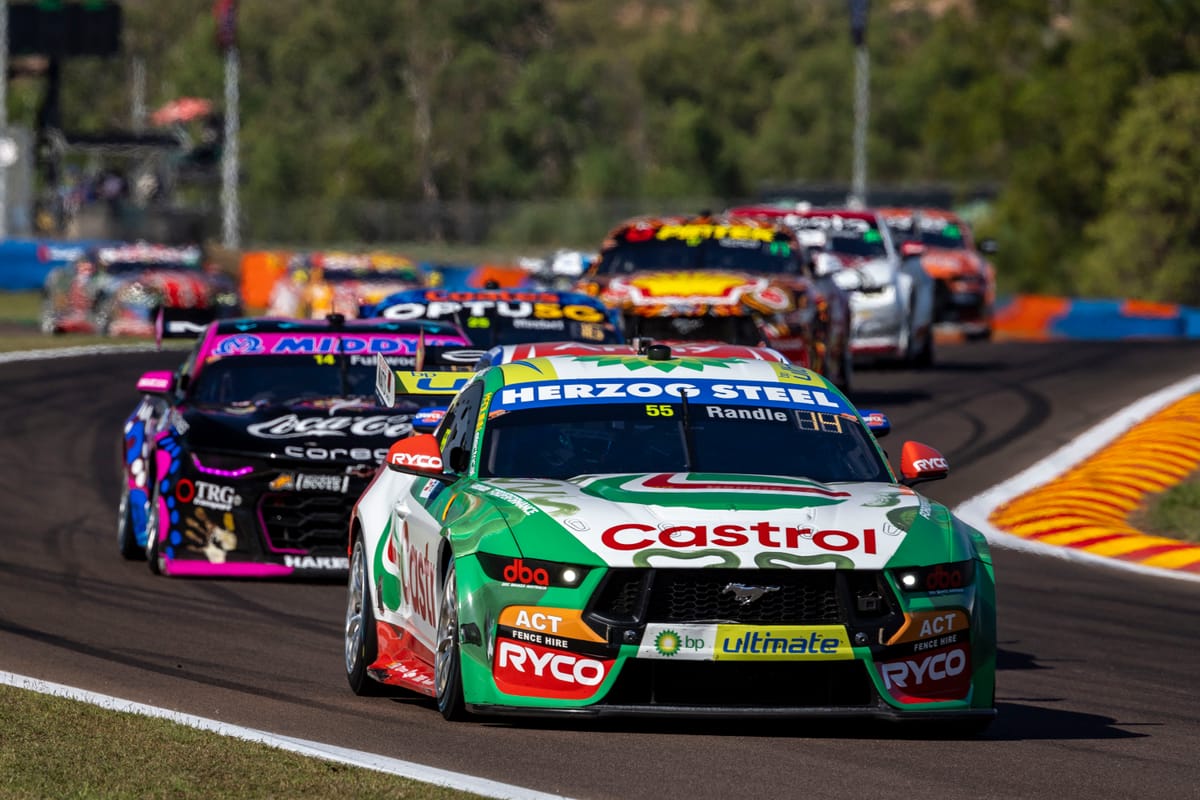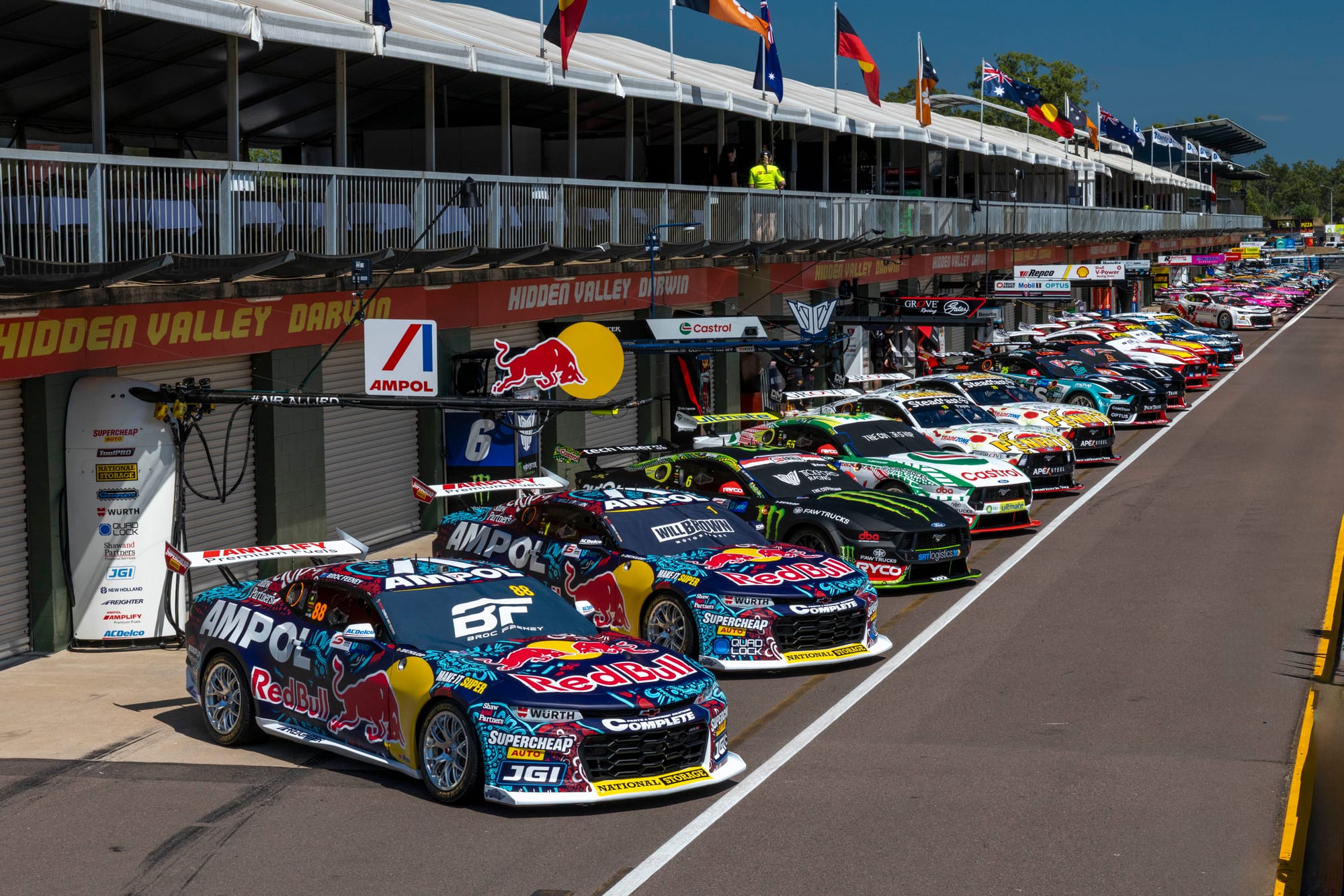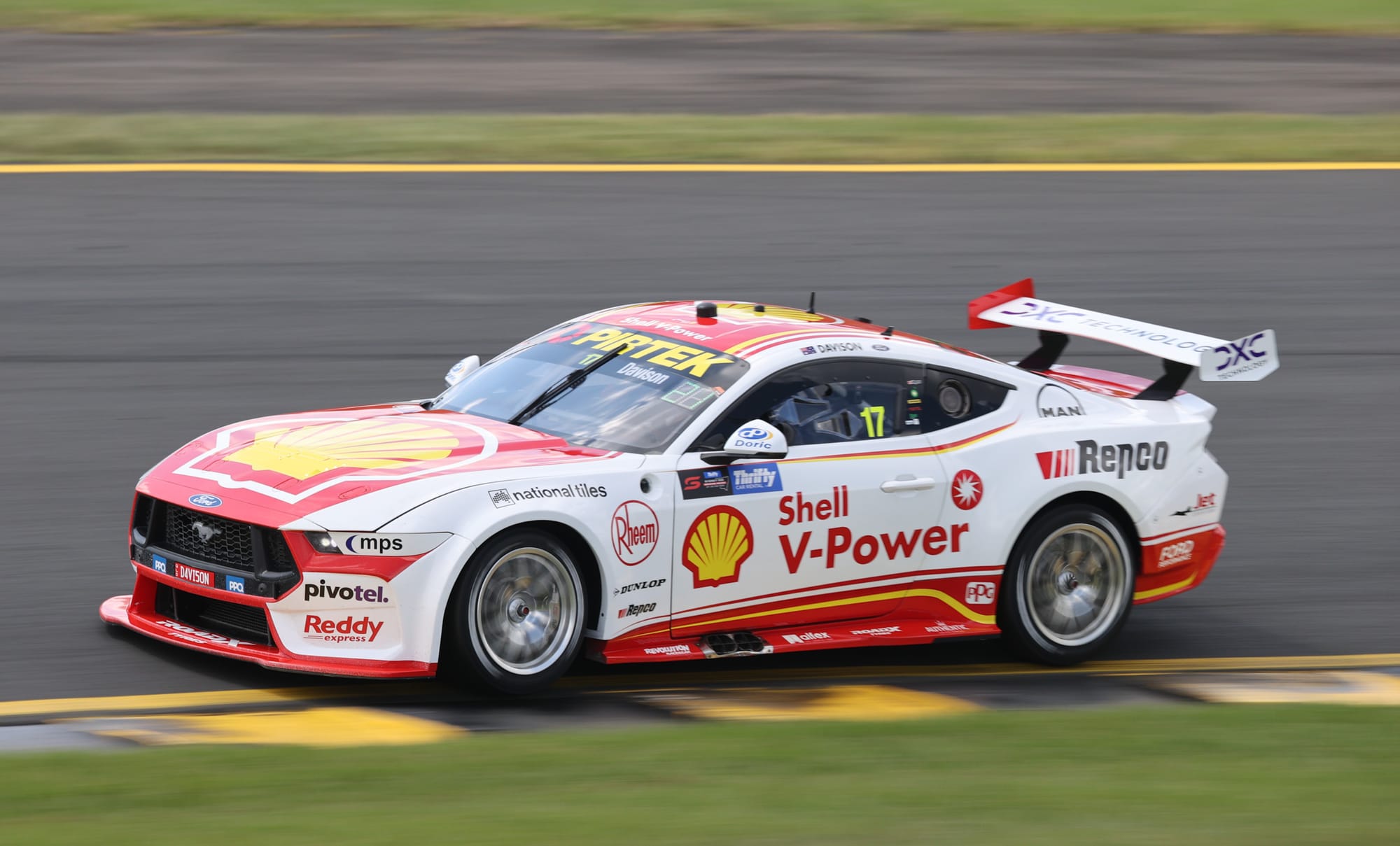FORD FEELING THE HEAT

The final torture test for the Ford Mustang, and the race for parity against the Chevrolet Camaro, begins in Darwin today.
After another round of engine-management tweaks to the Coyote V8 there are high hopes that last year's underwhelming results at Hidden Valley will finally be in the past.
It's all about the battle to match the Mustang's tuning to the car's inlet air temperatures, which have been identified as the key component in the battle to race equally with the Camaro.
"We should have a clearer picture of where things sit at the end of this weekend," the Ford Performance Australian Motorsport program manager, Brendan McGinniskin, tells Race.news.
"This will definitely be the round where the changes first enacted in Tasmania, relating to engine intake temperature, will face properly hot temperatures."
The new hope comes after a disappointing Darwin in 2024, where the combination of high ambient temperatures and even-higher temperatures while racing in traffic hit the Fords.

"We’ve suspected for some time that the Coyote was at a disadvantage in warmer temperatures. Supercars did some controlled-temperature dyno testing earlier this year, which showed that the Ford engine was disadvantaged in warmer climates, when intake temps are over 25 degrees," says McGinniskin.
"Darwin, generally being one of the hottest events on the calendar, with a very long straight where full throttle and max power are key, further highlighted that disadvantage."
Apart from the engine tuning, he highlights the importance of getting the best from Dunlop racing rubber.
"Because of the high temps, it can be challenging to keep tyres in the right operating window. It’s a track that brings lots of challenges, big braking into One, long loaded exits, fast change of direction, straight drive out of the hairpin. You’ve got to have a car that can do it all.
"Given the tyre usage for this weekend, with two races on the new-for-2025 tyre and one on the older rubber, it’s likely to see some variance in result as teams try to manage the different constructions."

But, for the Fords, it's still about achieving engine parity.
"There have been a range of changes to the Ford engine in 2025 to date, including camshaft mapping, which is the overall position of the camshafts versus rpm to ensure less movement in our variable cam timing.
"The air inlet temperature dependent cam maps should enable the two engines to have as close to the same performance versus inlet air temperature as possible – this is the change that was enacted in Tassie. The restrictor size was changed to suit this adjustment at the same time.
"We’ve also been working on throttle translation tables – which is the throttle body position relative to the driver’s pedal input – to modify part throttle drivability/torque delivery."
Even so, McGinniskin is not totally convinced by the moves to manage the inlet temperatures.

"Given the major differences in engine architecture, this opens up the possibilities of the two engines having significantly different sensitivities to all manner of environmental inputs (inlet air temp/density/pressure, water/oil temps, engine bay temperature).
"Supercars testing continues, and we firmly believe that the category needs to complete all of these sensitivity studies to understand the differences between engines under the widest array of operating conditions.
"The inlet air temperature study has just scratched the surface and has uncovered significant disparity, against the Ford, which until now has not been explained by the single-point engine parity test, including at AVL."
But why is it so critical, and what affects the temperatures?
"Inlet air temperature is a critical factor to performance of combustion engines. Both engines are impacted, however the Chev architecture is less sensitive, with less power loss per degree rise of inlet temp.
Inlet temp is affected by ambient conditions, however also by following other cars while racing nose to tail and on restarts.
But the parity battle is not done yet, with Bathurst still looming.

"That is a separate issue that relates to elevation, and barometric pressure. That work is ongoing, and will be tested in advance of this year’s race," says
So, can a Mustang win at Bathurst in 2025?
"At this point in time, it will be hard. The inlet air temperature study and changes may help in some situations, however Bathurst is generally not a hot ambient temperature race.
"The barometric studies are going to be key, and we know that Supercars is moving in that regard – however time if of the essence and these need to be completed very quickly. Time will be needed to ensure no other issues are highlighted or appear as a result.
"Make no mistake, accurately testing barometric pressure changes on dyno is a difficult thing, and if Supercars can get it done as they plan to, they will be one of few test cells in the world with the capability.
"This is the challenge of technical parity - you have signed up to creating equal performance across all racing conditions. That’s a very hard thing to do."

